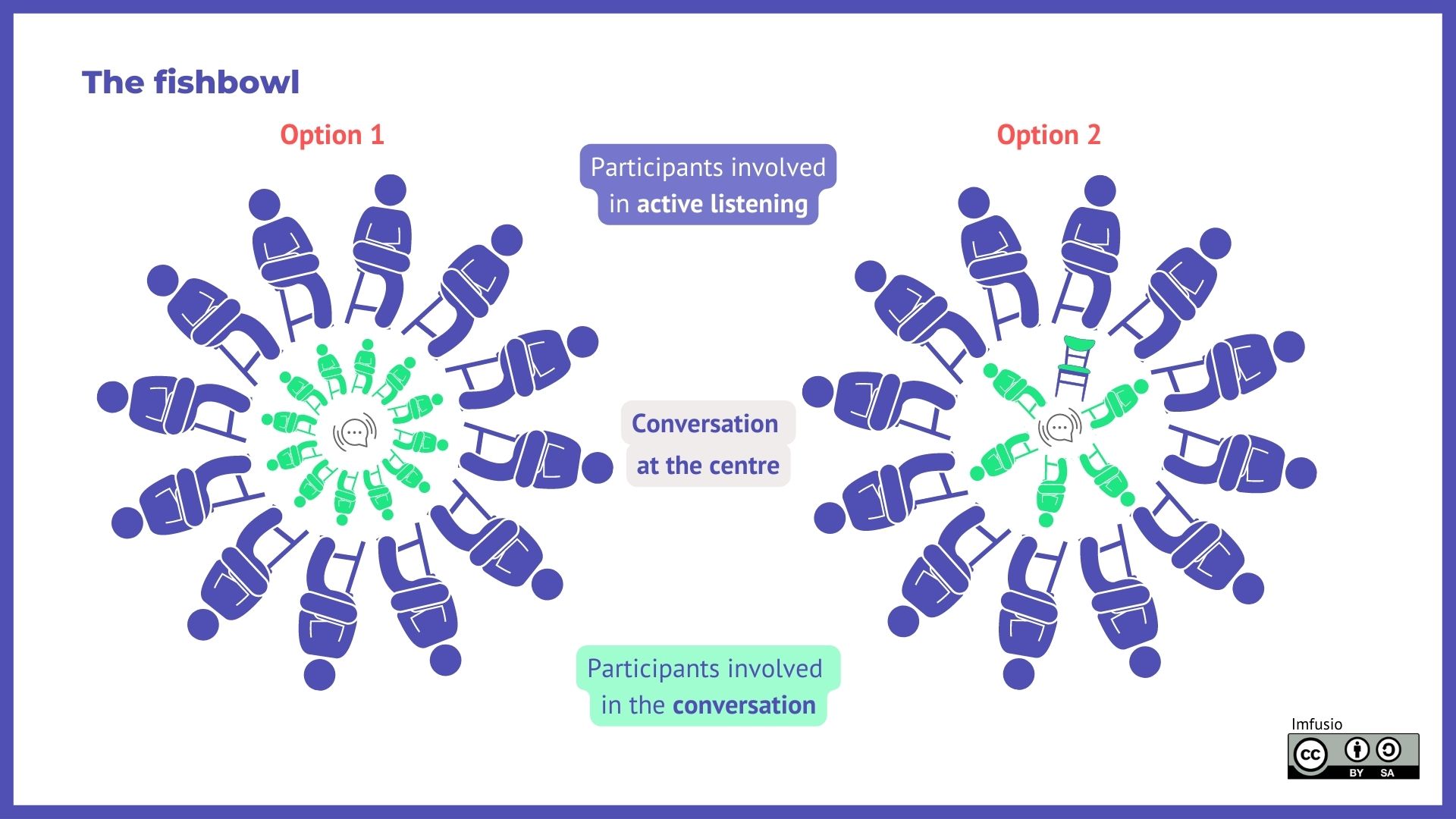To save colors and take care of the planet, print this text in shades of gray
The fishbowl
Create an open group conversation about a specific topic
Pratique
Aim
The fishbowl technique creates a space for discussion, sharing and listening, enabling the group to really delve deep into a given topic, to exchange good practices and to listen to other people’s first-hand accounts.
This particular format guarantees a high level of listening between the participants and facilitates transparent, authentic conversations.
Instructions
Times needed: 40 à 60 minutes
Materials:
- A calm, fairly large space that can accommodate two concentric circles of chairs
This set-up encourages active listening and high-quality discussions. As facilitator, you must remind the group of the rules of a talking circle, and inform them that you will only intervene if the rules are not respected or if anyone needs help.
By adopting a more discreet position, you will enable the group to manage the task autonomously and take full responsibility for the discussions.
Key steps
Before launching the discussions, explain the question the group will be tackling (defined in advance with the workshop initiators).
Option 1 — two simultaneous “sealed” circles:
The two circles contain the same number of chairs.
- The participants in the inner circle discuss the question. The participants in the outer circle listen and take notes, without interfering. [15 to 20 minutes]
- The circles switch over (those in the inner circle swap to the outer circle and vice versa). The “new” inner circle discusses the same topic, or reacts to what they’ve heard during the previous turn. [15 to 20 minutes]
- If you want to, you could suggest a debriefing session. For example: What has emerged from our discussions? What will my next action be in relation to the project? What are our 3 major priorities for the next few months? [10 to 15 minutes]
Option 2 — “The empty chair”:
In this scenario, the circles are not “sealed”: the inner circle comprises a maximum of 4 to 7 chairs, whilst the outer circle contains as many chairs as there are participants.
In this set-up, those in the outer circle are allowed to enter the conversation in the inner circle as and when they wish.
There is always at least one empty chair in the inner circle so that the group can manage movement between the two circles themselves.
How does it work?
- At the start, all the participants are sat in the outer circle.
- Anyone can then voluntarily move to the inner circle and start a conversation on the relevant topic.
- Anyone in the outer circle can choose to move into the inner circle and join in with the conversation, as long as the “empty chair” rule is respected.
If upon sitting down in the inner circle, there is still an empty chair, nobody needs to get up. However, if the last person to arrive takes the last chair, one of the other participants has to return to the outer circle.
Just like in option 1, if you want to, you could suggest a debriefing session at the end.

Tips and advice
- In the empty chair variant (option 2), you can ask the participants in the outer circle to stand up if they want to enter the inner circle. If nobody moves, they can touch the shoulder of someone in the inner circle: this person must then give up their place.
- Make sure that the inner circle doesn’t become a bilateral discussion.
- Sometimes the conversation will take time to get started. Accept this silence: it will always end up being interrupted by somebody.